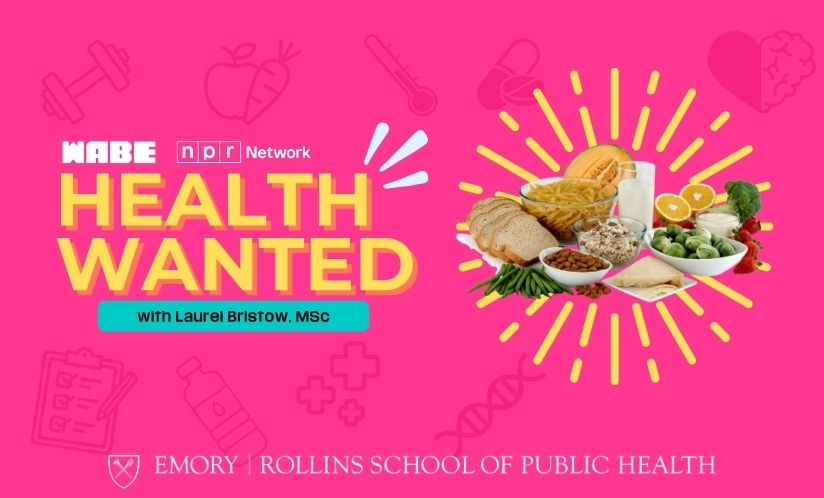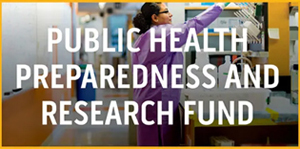Health Wanted: Food Systems

HEALTH WANTED, a weekly radio show and podcast produced in partnership with WABE, brings need-to-know public health headlines and breaks down the science behind trending topics.
The Episode
The topic: Many Americans have diets deficient in fresh produce, whole foods, and important nutrients, and it isn’t all due to personal choices. This week on Health Wanted, host Laurel Bristow and guest Megan Winkler, PhD, discuss the cost, access, and availability of healthy food in the United States.
The takeaway: What you eat is more complicated than making a personal decision. External factors like marketing, availability, and cost heavily influence food choices, often making it more difficult to maintain a balanced diet.
- Processed foods are difficult to avoid. Grocery stores are intentionally laid out to make shoppers walk past shelves of heavily marketed processed foods. Outside the store, fast food, advertising, and convenience shops flood our environments with less healthful options, making it hard to avoid ultra-processed choices.
- The decline of family farms in the 1980s and the rise of subsidies for commodity crops like corn and soy have shifted the nation’s food production toward ingredients used in processed foods. These economic forces led to fewer diverse crops being grown and fewer local food options, especially in rural areas.
- Many stores, especially in low-income neighborhoods, don’t carry fresh fruits and vegetables. Even stores that accept food assistance programs like SNAP aren’t required to stock produce, which limits healthy food access and options for many people.
- Diet is often framed as an individual decision, but what we eat is heavily influenced by farm policy, corporate decisions, product design, and access. Without systemic change to food production and distribution, improving individual health through diet alone is incredibly difficult.
The Interview
The guest: Megan Winkler, PhD
The key takeaways:
- The public health lens has shifted from focusing on "food deserts" to "food swamps," where processed food options outnumber nutritious ones. Communities often have access to food, but it's largely ultra-processed or fast food and not affordable fresh produce or whole foods.
- What people eat and are advertised is deeply shaped by corporate strategies. Many processed foods contribute significantly to the development of disease and chronic conditions, but the companies that produce those foods do not have any responsibility for the resulting health consequences.
- Sugar-sweetened beverage taxes have proven effective internationally and could be used more in the U.S. Not only do they reduce consumption of sugar, but the revenue can even be used to fund health-promoting infrastructure like green spaces, early education, and better food access.
- Policy change is key in the movement to provide people with healthier food options. Policymakers could incentivize existing stores to offer produce, subsidize local supply chains, and require big chains like dollar stores to carry fresh food. At the same time, broader policies, like raising the national minimum wage, can also help reduce food insecurity.
The Listener Questions
Is eating raw brownie batter dangerous?
Eating raw batter is not safe, and it’s more dangerous for kids.
A lot of people think that the danger comes from uncooked eggs, which can contain salmonella if the chicken they came from was infected with the bacteria.
But the flour also puts you at risk for things like salmonella and E. coli.
Flour is considered a raw ingredient because it is not heat-treated. It can still have contaminants that could be picked up on the grain in the field, like animal waste, or during the milling process.
The CDC has done outbreak investigations that found raw flour or cake mix was the culprit of disease in2016, 2019, 2021, and 2023.
None of those outbreaks had a huge number of cases, but it’s the kind of thing where, if you did get sick, you’d feel pretty unlucky and wonder if it was worth it.
If you’re about to have a nice treat when the brownies come out of the oven in 20 minutes anyway, then it seems like it’s extra not worth the risk. Make some side pudding if you want the experience so bad.
Are kids getting sick from drinking slushies?
This seems to have been happening in the UK due to their use of glycerol in slushies.
Glycerol is a sugar substitute, or non-sugar sweetener, that also helps slushies maintain their texture and slush. But because it doesn’t metabolize like regular sugar, it can stay in the body longer and build up in our bloodstream.
If there’s too much glycerol, the body tries to bring the blood back into balance by pulling water from other parts of the body, like the brain, which can cause headaches, nausea, and dizziness.
Because kids under eight are smaller and have less blood overall, some people are saying they should not eat slushies with glycerol at all. The amount of glycerol in slushies isn’t standardized, and they may be at risk of putting too much in their bloodstream too quickly, which is what happened to some kids in the U.K.
Glycerol does exist in the U.S. and it’s an approved ingredient, but it’s used a lot in slushies in the UK because they have a sugar tax, and other sweeteners, like aspartame, don’t work the same way to maintain the slush texture.
So an easy way to avoid potential glycerol toxicity is to give your kids slushies with the good stuff: actual sugar.
Catch all the listener questions and Laurel’s answers on the full episode of Health Wanted by:
- Streaming at org or the WABE app
- Subscribing on Apple or Spotify
- Watching on WABE's YouTube channel


